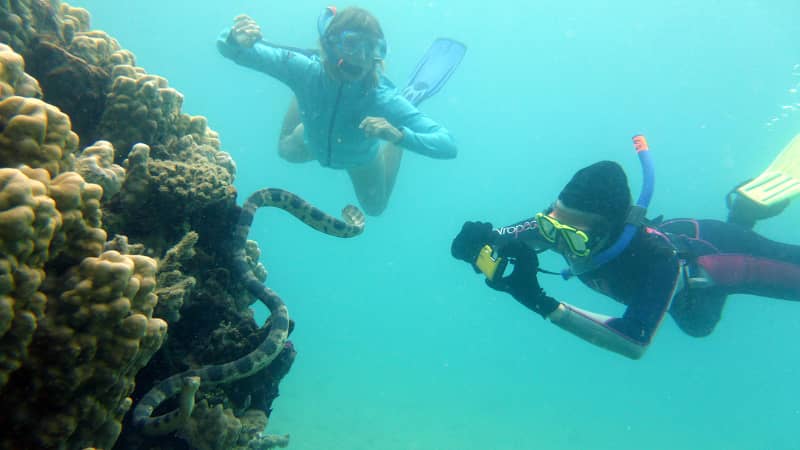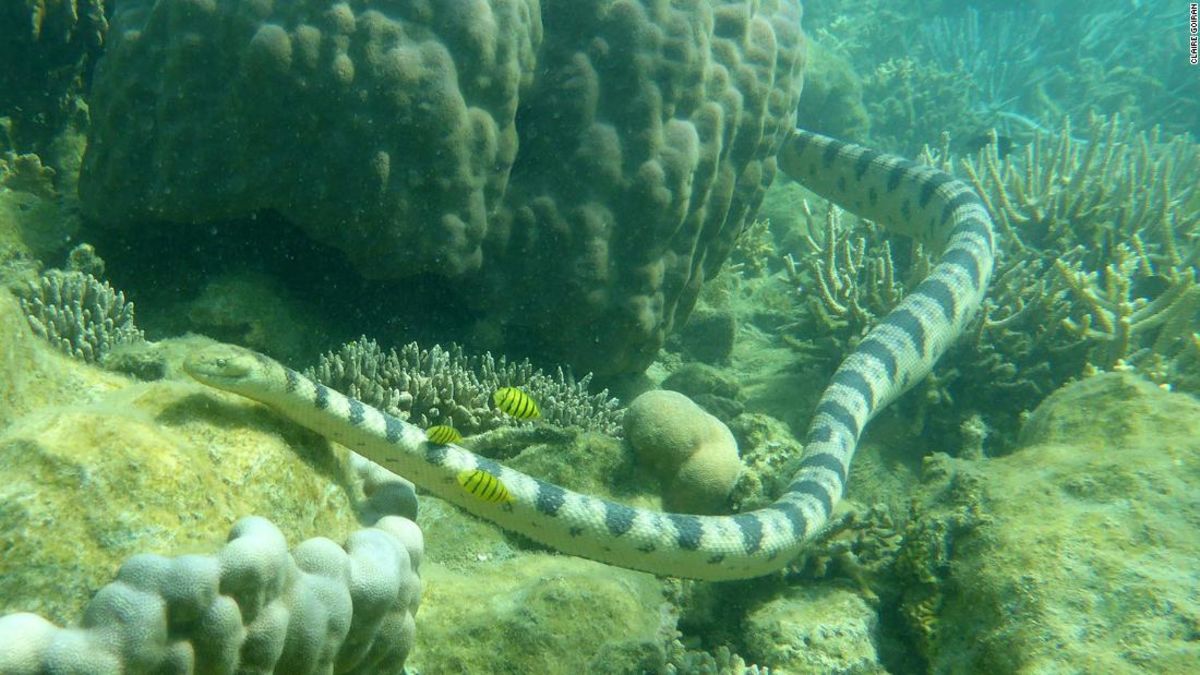“The Fantastic Grandmothers,” as they call themselves, have worked with scientists from the University of New Caledonia and Macquarie University, Australia, since June 2017. All in their 60s and 70s, they are enthusiastic snorkelers who volunteered to photograph the deadly sea snakes.

Two of the grandmother dive to photograph the snake’s tail for identification.
Claire Goiran
She praised the grandmothers’ energy, adding they “have transformed our understanding of the abundance and ecology of marine snakes in this system. It’s a great pleasure and privilege to work with them.”
Rick Shine, a professor from Macquarie University who co-authored the paper, told CNN that the increasing involvement of members of the public in research was “one of the most exciting new developments in science.”.
Citing the special expertise of some members of the public, he added: “The Fantastic Grandmothers are a powerful example — they have shone a bright light into the ecology of sea snakes, in a way that we could never have imagined until they came onto the scene.”
There had been only six sightings of this species in the area between 2004 and 2012. Although 45 individuals had been sighted by the end of 2016, photographs taken by the grandmothers and Goiran recorded more than 140 greater sea snakes between October 2016 and November 2018.
Scientists say this is a remarkable number of venomous snakes for a reef which is under 35 hectares in size. Since there have been no reports of humans being bitten by these snakes, Shine described them as having a “benevolent disposition”.
The lethally toxic species can grow to more than 1.5 metres in length. Individuals can be easily recognized because of their unique patterns.
According to Goiran, this project also provided more new information on the breeding patterns of the reptiles and the numbers of their young than any previous studies on a related species.
